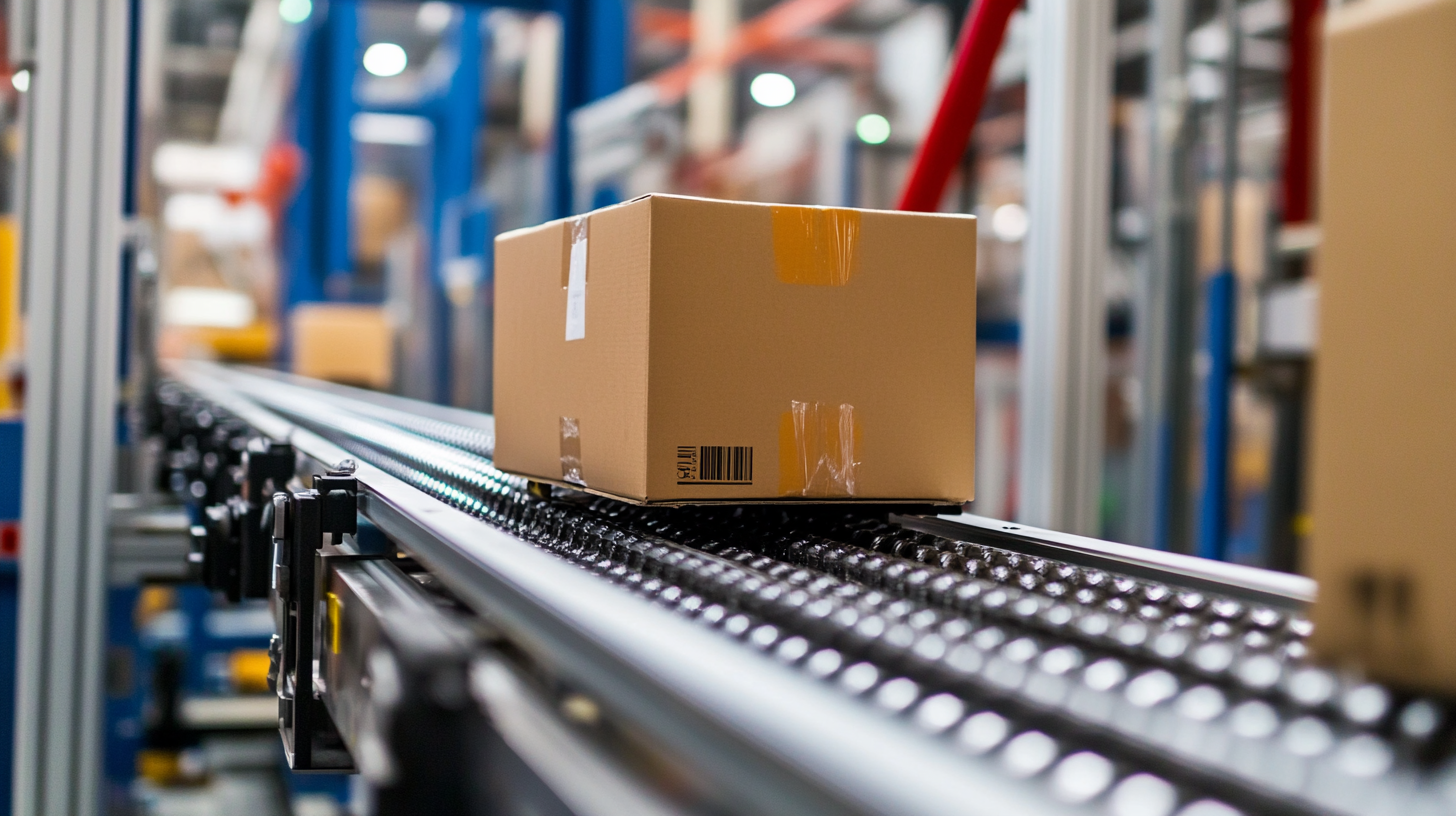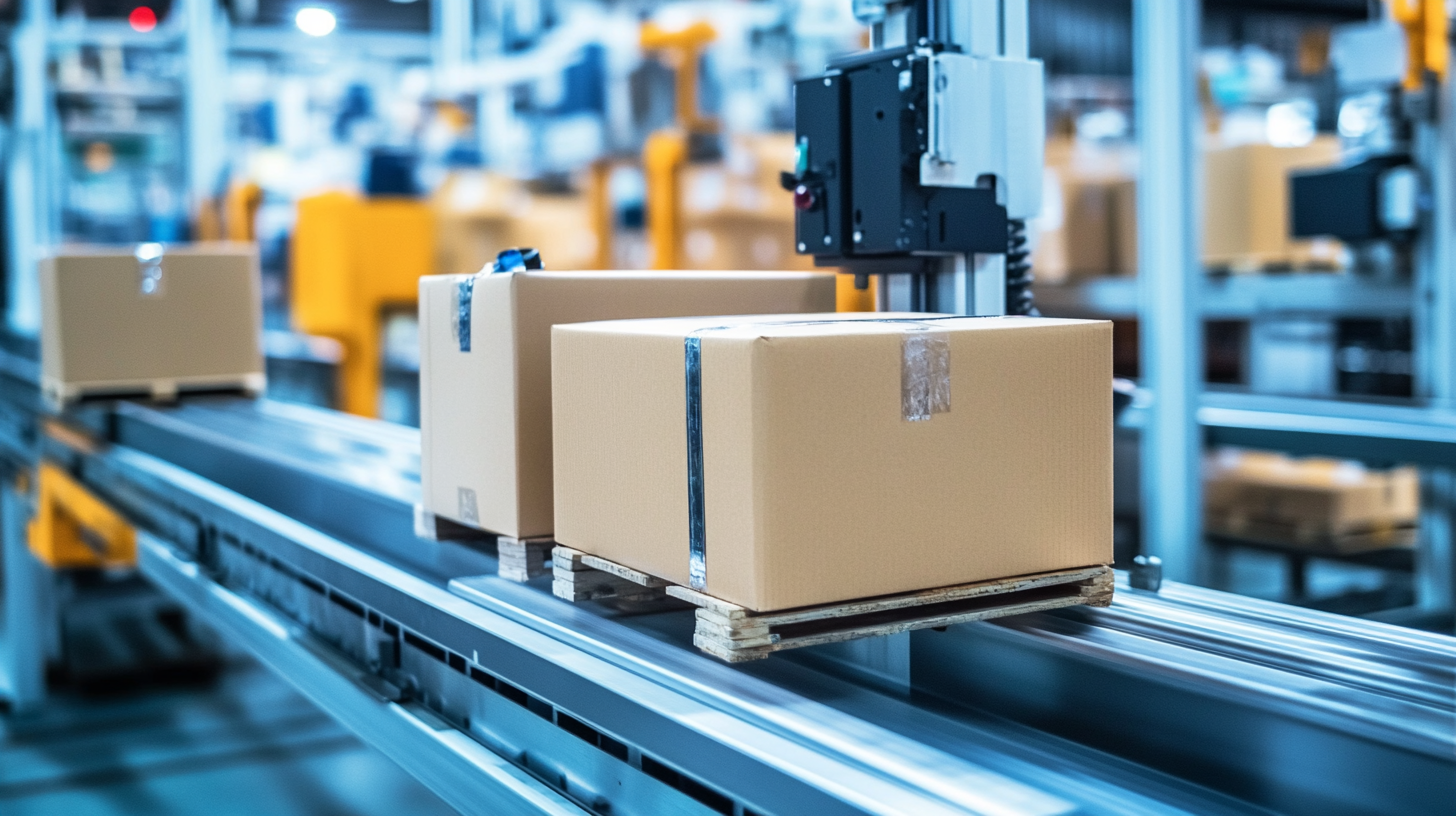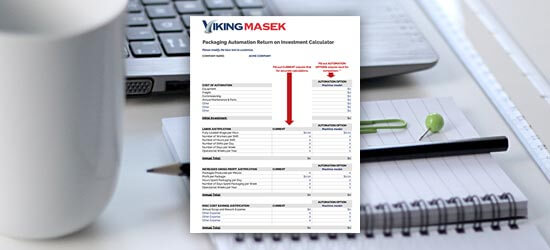
10 Reasons Why Best Packaging Automation Equipment Can Transform Your Production Efficiency
In today's fast-paced manufacturing landscape, the adoption of Packaging Automation Equipment has become a critical factor in enhancing production efficiency. According to a report by Research and Markets, the global packaging automation market is projected to grow from $92.28 billion in 2020 to $146.52 billion by 2025, reflecting a compound annual growth rate (CAGR) of 9.8%. This rapid growth underscores the increasing importance of automated solutions that not only streamline operations but also improve accuracy and reduce labor costs. As manufacturers strive to meet consumer demands while optimizing their production lines, understanding how to select high-quality packaging automation equipment from trusted manufacturers becomes essential. The right equipment can significantly transform production processes, increase throughput, and ultimately drive profitability in an increasingly competitive market.

Benefits of Investing in High-Quality Packaging Automation Equipment
Investing in high-quality packaging automation equipment can lead to significant improvements in production efficiency, ultimately transforming your manufacturing process. One of the primary benefits is the increase in speed and consistency that automated systems provide. Unlike manual packaging, which can be prone to human error and variability, automated equipment maintains a steady output, ensuring that products are packaged swiftly and uniformly. This not only reduces the likelihood of mistakes but also accelerates the overall production timeline.

Moreover, high-quality packaging automation systems contribute to labor cost savings. By minimizing the number of workers needed for packaging tasks, companies can reallocate those resources to other critical areas of production or reduce overhead costs significantly. The advanced technology in modern equipment also often provides better tracking and data collection capabilities, allowing businesses to analyze workflow and make informed adjustments.
With improved efficiency and reduced costs, investing in top-tier packaging automation can be a game changer for manufacturers looking to stay competitive in a rapidly evolving market.
Key Technologies Driving Packaging Automation Success
In the fast-paced world of manufacturing, packaging automation has emerged as a critical driver of efficiency. Key technologies such as robotics, IoT integration, and artificial intelligence are revolutionizing the way products are packaged, significantly enhancing productivity. For instance, robotic arms equipped with advanced sensors can swiftly and accurately handle products, reducing the reliance on manual labor and minimizing human errors. This technology allows for faster cycle times, ensuring that production lines keep up with demand without sacrificing quality.
Moreover, the integration of IoT in packaging automation provides real-time data analytics, enabling manufacturers to monitor equipment performance and operational efficiency. By using smart sensors, businesses can gather insights into processes, identify bottlenecks, and make informed decisions on maintenance and upgrades. This not only extends the lifespan of packaging equipment but also improves resource allocation, further maximizing throughput. Artificial intelligence also plays a vital role, as it can optimize packing patterns and predict outcomes, ensuring that every inch of space is utilized effectively and reducing waste in materials. These key technologies together create a cohesive system that propels production efficiency to new heights, marking a transformative era in the packaging industry.
10 Reasons Why Best Packaging Automation Equipment Can Transform Your Production Efficiency
| Reason | Description | Impact on Efficiency |
|---|---|---|
| Increased Speed | Automation equipment can operate at much higher speeds than manual processes, significantly reducing packaging time. | Boosts production output |
| Consistent Quality | Automated systems minimize human error, leading to a uniform product quality. | Enhances customer satisfaction |
| Cost Reduction | Lower labor costs and reduced waste contribute to overall cost savings. | Improves profit margins |
| Flexibility | Modern packaging equipment can handle a variety of products and packaging types, allowing for quick changeovers. | Increases adaptability to market changes |
| Data Collection | Automated systems can track performance metrics in real-time, providing valuable insights. | Facilitates better decision-making |
| Safety Improvement | Automation can handle heavy lifting and hazardous materials, reducing workplace accidents. | Enhances employee safety |
| Reduced Workload | Automation alleviates repetitive tasks, allowing workers to focus on more complex duties. | Improves employee morale and productivity |
| Sustainability | Efficient packaging reduces material waste and energy consumption. | Supports eco-friendly initiatives |
| Enhanced Aesthetics | Automated machinery can produce more visually appealing packaging. | Attracts more consumers |
| Integration with Supply Chain | Packaging automation can seamlessly integrate with inventory and logistics systems. | Optimizes overall supply chain efficiency |
How Packaging Automation Reduces Production Time and Labor Costs
In today's fast-paced manufacturing environment, integrating packaging automation can significantly reduce production time and labor costs. By replacing manual processes with advanced machinery, businesses can achieve consistency and speed in their packaging lines, allowing products to reach the market faster. Automating repetitive tasks not only minimizes human error but also streamlines workflow, enabling teams to focus on higher-value activities that drive innovation and growth.
Tip: Consider investing in modular packaging systems that can easily adapt to different product sizes and packaging styles. This flexibility will allow for smoother transitions between production runs and reduce downtime during changeovers, ultimately enhancing overall efficiency.
Moreover, packaging automation can lead to substantial savings on labor costs. With fewer workers needed for manual packaging tasks, companies can allocate resources more effectively and reduce expenses associated with hiring and training. Automation also helps in managing peak production times without the need for overtime pay, further decreasing operational costs.
Tip: Implement continuous training programs for your staff to work alongside automated equipment. This ensures that your team is skilled in using the technology to its full potential, maximizing the benefits of automation while maintaining a safe and efficient workplace.
Impact of Packaging Automation on Production Efficiency
This chart illustrates the significant benefits of packaging automation in production efficiency. The implementation of automated packaging systems can result in a 30% reduction in production time, a 25% decrease in labor costs, a 40% reduction in error rates, and a 35% increase in output. These metrics highlight the transformative effect of automation on operational efficiency.
Enhancing Product Quality and Consistency Through Automation
Automation in packaging has revolutionized the way products are handled, significantly enhancing product quality and consistency. By employing advanced packaging automation equipment, manufacturers can minimize human errors that often lead to inconsistencies in product presentation and quality. Automated systems ensure that each package meets the same high standards, from sealing to labeling, thus maintaining brand integrity and improving customer satisfaction.

Moreover, automation optimizes the precision and efficiency of packaging processes. With technologies such as robotic arms and smart conveyors, companies can streamline operations to reduce waste and increase productivity. This precision not only ensures that the products are packaged correctly but also reduces the risk of damage during the packaging process. The result is a more reliable and consistent output, helping businesses to build customer trust and capitalize on market demands rapidly. Adopting the best packaging automation equipment is, therefore, a key strategy for manufacturers looking to enhance their product quality while achieving operational excellence.
Future Trends in Packaging Automation You Shouldn't Ignore
The landscape of packaging automation is rapidly evolving, and businesses that remain unaware of emerging trends risk falling behind. One of the most significant shifts is the increased integration of artificial intelligence (AI) and machine learning into packaging systems. According to a report by MarketsandMarkets, the global AI in product packaging market is expected to grow from USD 2.9 billion in 2021 to USD 12.5 billion by 2026, registering a CAGR of 34.5%. This trend indicates that companies are investing heavily in AI to enhance decision-making processes, optimize operations, and predict maintenance needs, ultimately leading to improved production efficiency.
Moreover, sustainability and eco-friendly packaging solutions are becoming central to industry strategies. The 2021 Sustainable Packaging Market report highlighted that over 75% of consumers prefer brands that use sustainable packaging. As a result, businesses are now exploring biodegradable materials and innovative recycling solutions. This shift not only meets consumer demand but also aligns with regulatory pressures aimed at reducing environmental impact. Moving forward, companies that leverage these trends in their packaging automation strategies will likely see a significant boost in productivity while enhancing their brand reputation in a competitive market.


